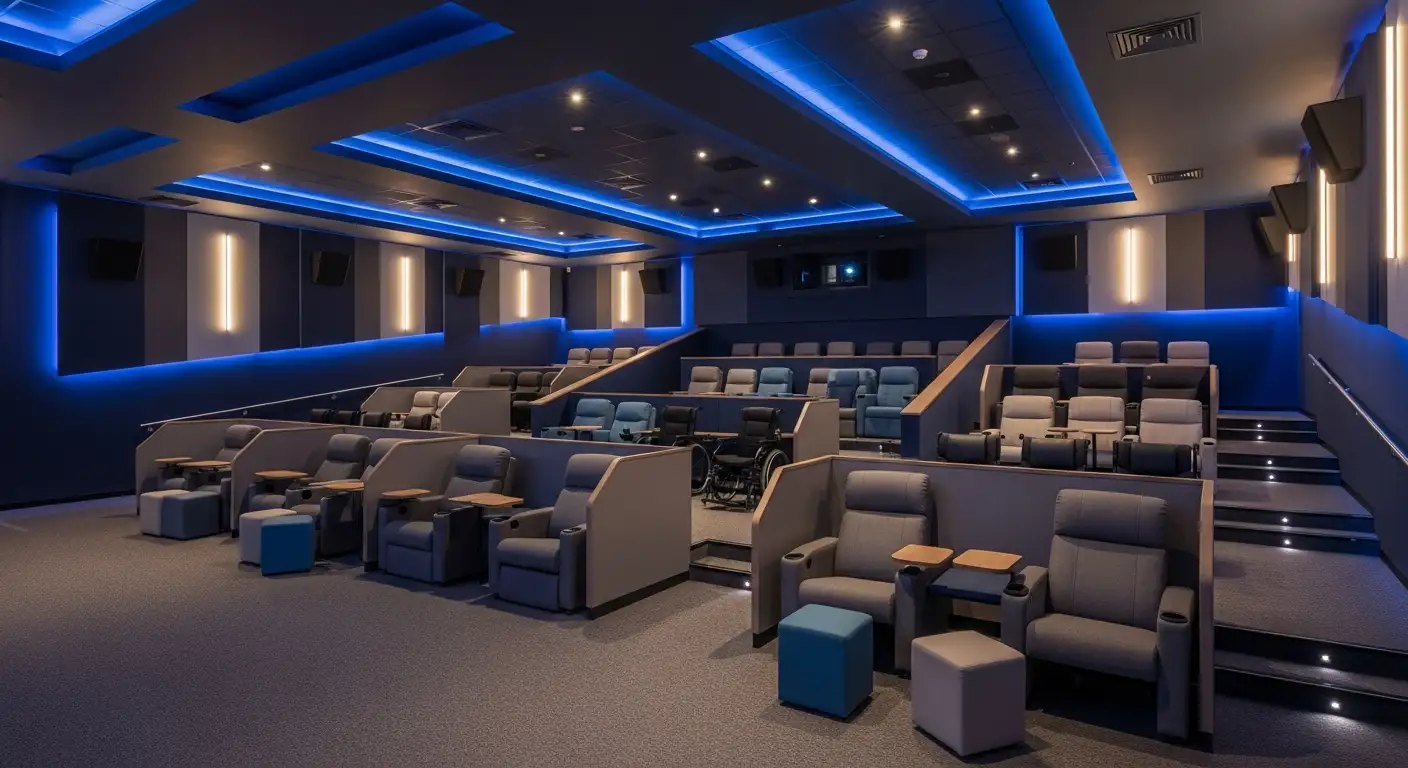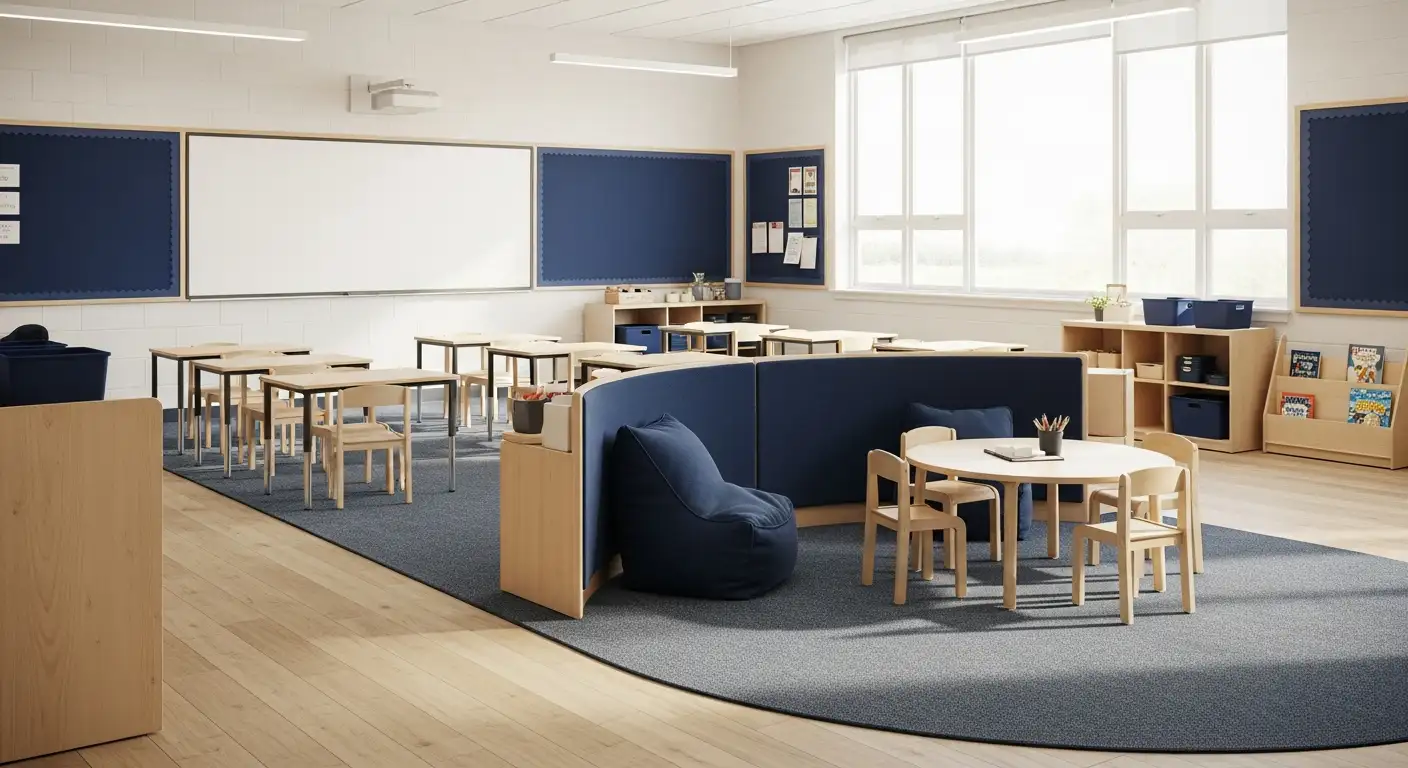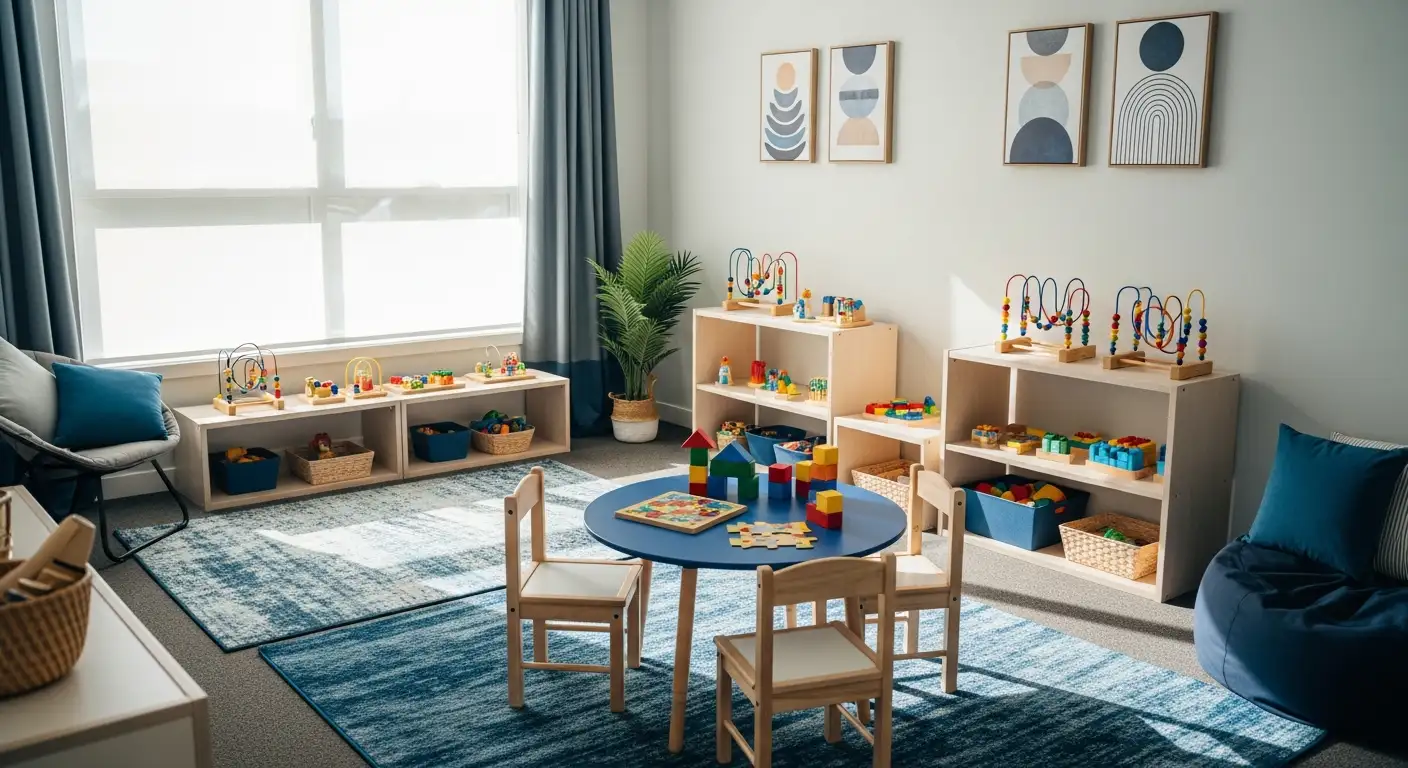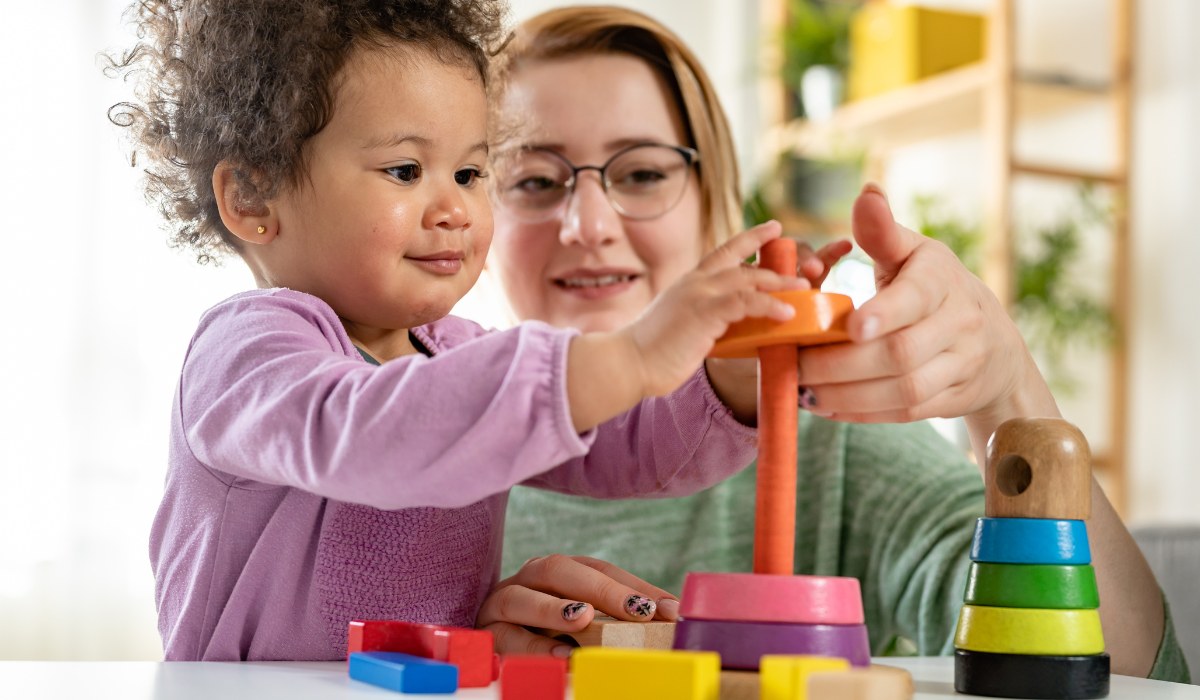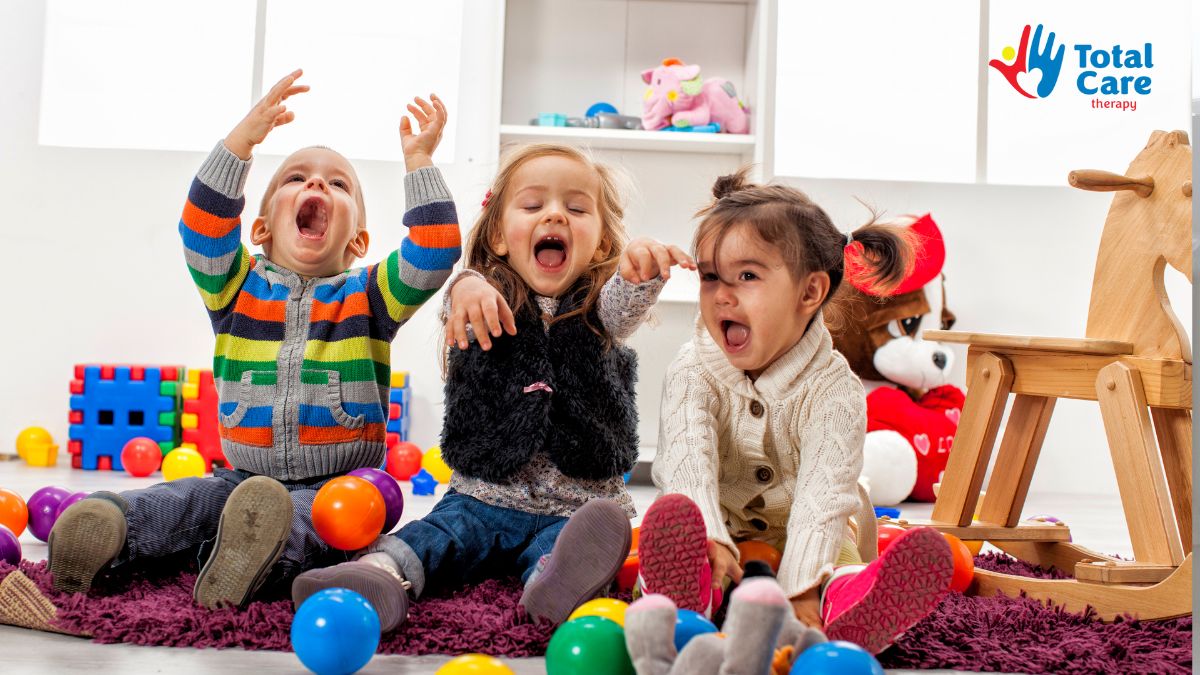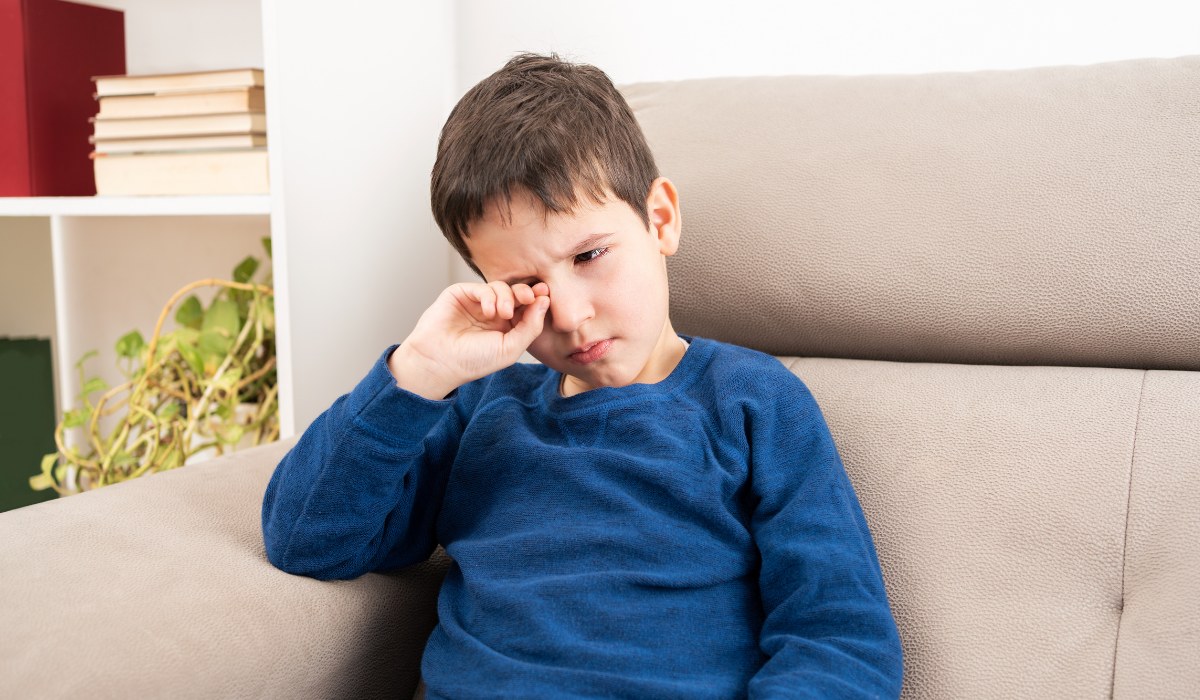Understanding Autism and Sensory Avoidance
Decoding Sensory Challenges in Autism Spectrum Disorder

An In-Depth Exploration of Sensory Processing and Avoidance Behaviors
Understanding autism spectrum disorder (ASD) involves recognizing the diverse ways in which individuals perceive and respond to sensory stimuli. Sensory processing differences are hallmark features of ASD, influencing behavior, communication, and everyday functioning. This article delves into what sensory avoidance entails, how it manifests, the neural mechanisms behind sensory differences, and effective strategies for support and intervention.
Core Features of Autism Spectrum Disorder
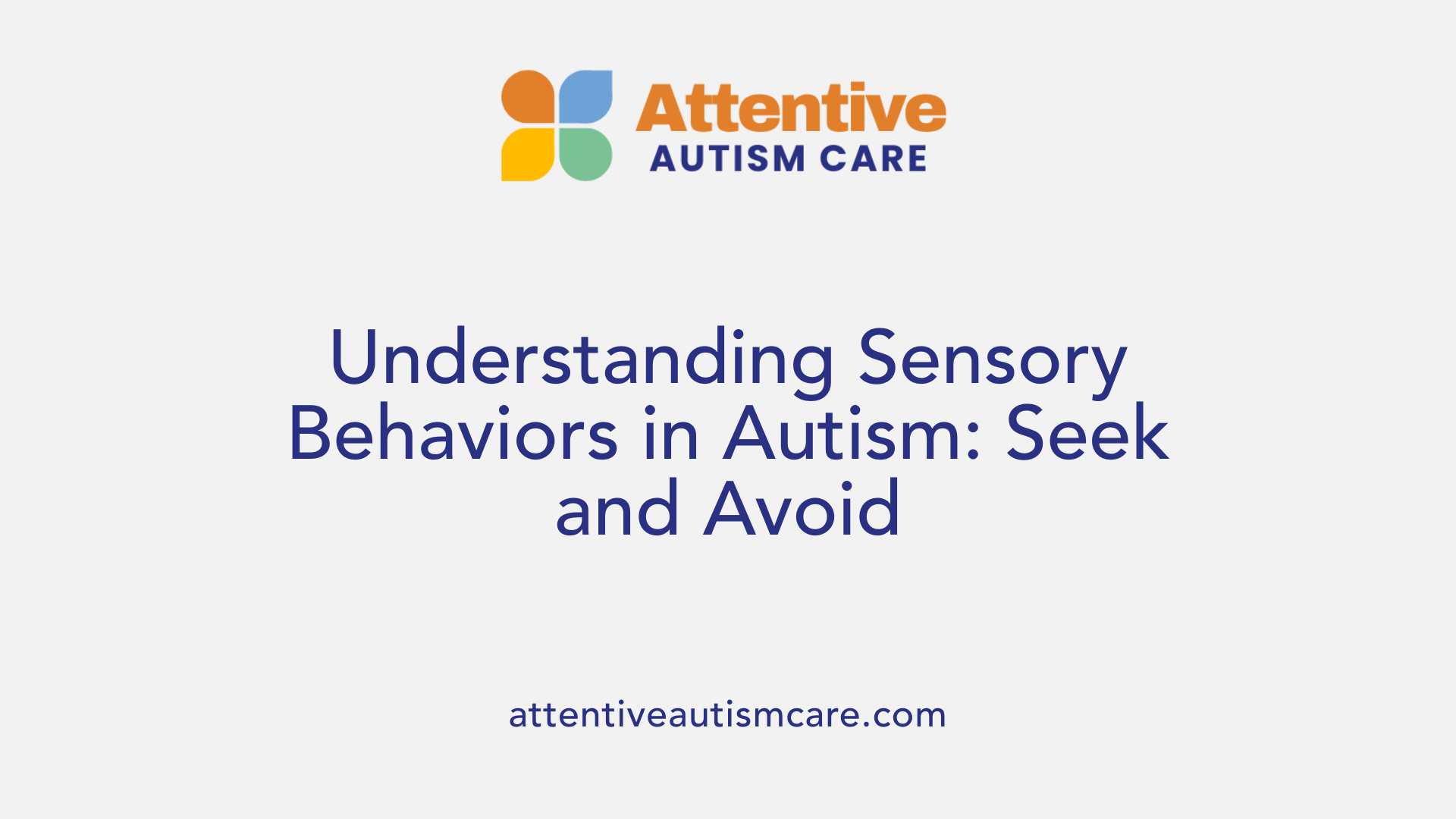
What are sensory seeking and sensory avoiding behaviors?
Children with autism often experience sensory processing differences that influence their behaviors. These behaviors primarily fall into two categories: sensory seeking and sensory avoiding.
Sensory seeking children are typically 'hypo-responsive,' meaning they underreact to sensory stimuli or actively crave more input. They might prefer movement activities like jumping or crashing into objects, enjoy touching various textures, make loud noises, and sometimes engage in risky behaviors. These actions often serve to satisfy their need for sensory input that their brain is not adequately registering.
On the other hand, sensory avoiding children are considered 'hyper-responsive,' reacting strongly to sensory stimuli. They are sensitive to smells, sounds, textures, and pain, often avoiding crowded or noisy environments and being reluctant to be touched. Their behaviors aim to minimize overwhelming sensory input, which they perceive as distressing.
What causes sensory seeking and sensory avoiding behaviors?
The reasons behind these behaviors are not fully understood but are believed to involve differences in sensory processing in the brain. Sensory seeking may stem from under-responsiveness or a desire to increase sensory input, while sensory avoiding is often a response to overstimulation or hypersensitivity. These behaviors serve as self-regulation mechanisms helping children cope with their sensory environment.
What challenges do sensory seeking children face?
Children who seek sensory input can face several difficulties. They risk physical injury from engaging in risky behaviors, such as climbing high structures or crashing into objects. Socially, their behaviors may be viewed as inappropriate or disruptive, leading to social ostracism. Additionally, sensory seeking behaviors can make learning environments challenging, as children might be distracted or overwhelmed.
How can caregivers help sensory seeking children?
Support strategies include providing safe opportunities for sensory input, such as jumping on a trampoline, using sensory toys like stress balls or textured fabrics, and engaging in activities that promote movement. Consulting occupational therapists can help develop personalized sensory diets and routines that meet their sensory needs in a safe and structured way.
What about sensory avoiding children?
Sensory avoiding children often prefer environments that are quiet and dimly lit, avoiding loud noises and bright lights. They may refuse certain clothing textures or foods that feel uncomfortable. Their behaviors help them avoid sensory overload, which can cause significant distress.
How can parents and teachers support sensory avoiding children?
Environmental modifications are vital—decluttering spaces, using noise-canceling headphones, choosing comfortable clothing, and creating calm areas with minimal sensory stimuli can be effective. These measures help reduce overstimulation and make daily activities more manageable.
What is sensory overload, and how does it affect individuals?
Sensory overload happens when the brain is overwhelmed by too much sensory information. It can lead to anxiety, irritability, physical discomfort, the need to cover ears or eyes, and even meltdowns. Managing overload involves avoiding known triggers, providing sensory tools, ensuring proper rest and hydration, and seeking professional support when needed.
Why are sensory issues significant in autism?
Sensory differences are common in autism and are included in diagnostic criteria. Over 96% of children with ASD report sensitivities across sensory modalities, such as auditory, tactile, and visual domains. These issues can profoundly impact daily functioning, social interactions, and emotional well-being.
How do sensory sensitivities manifest in autistic individuals?
Autistic people may be hypersensitive, reacting intensely to bright lights or loud sounds, or hyposensitive, seeking more sensory input or showing reduced responses to stimuli. Some experience both, shifting between seeking and avoiding stimuli based on context or sensory load.
What are typical behaviors associated with sensory issues?
Behaviors include increased movement or
Sensory Processing in Autism: Manifestations and Underlying Causes
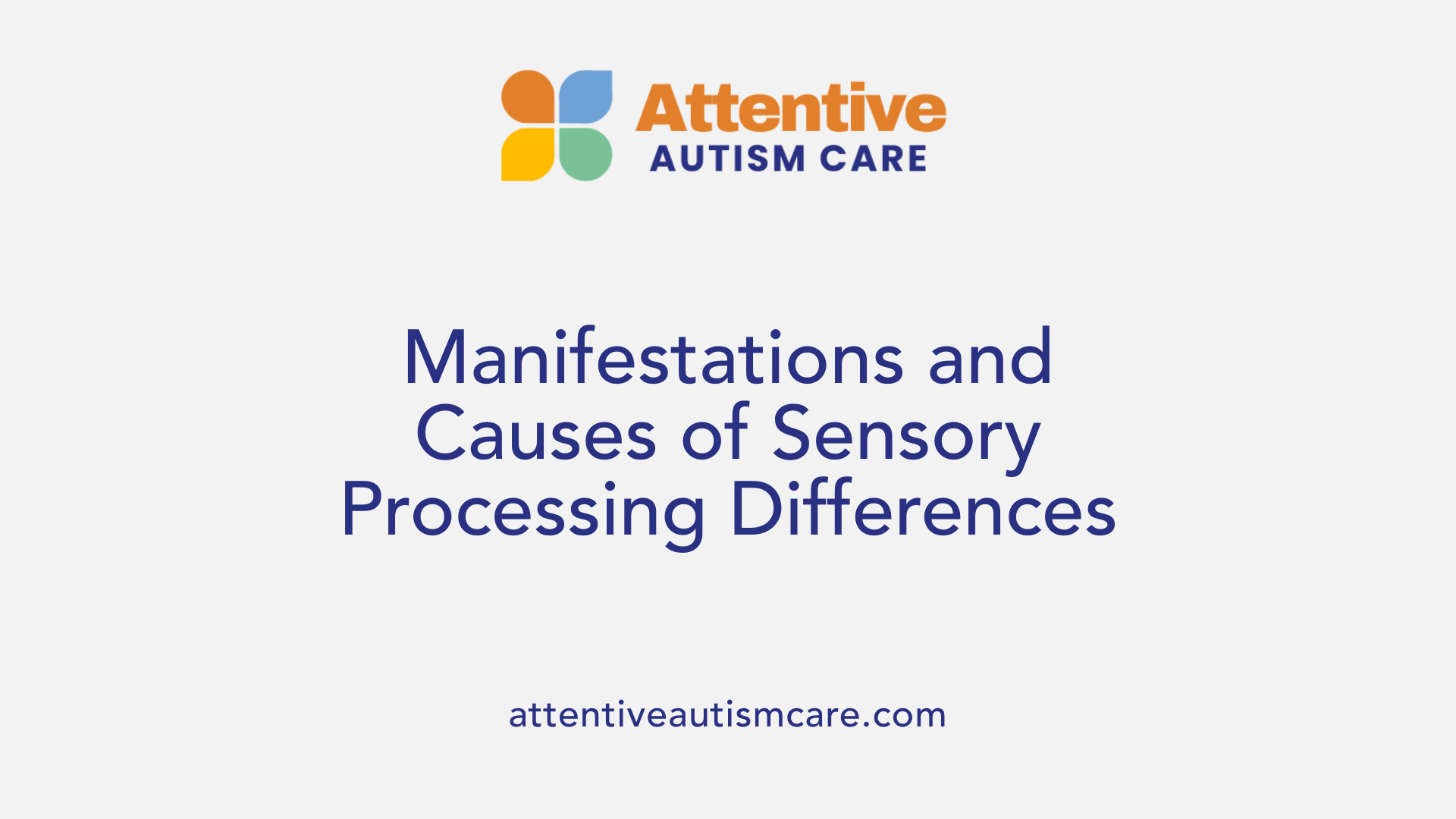
How do sensory processing differences manifest in autistic individuals?
Many people with autism experience various sensory processing challenges. These can appear as heightened sensitivities (hypersensitivities) or reduced responses (hyposensitivities) to stimuli from sights, sounds, touches, smells, and tastes. For instance, some may be overwhelmed by loud noises or bright lights and try to avoid these, or they might seek out intense sensory experiences like touching everything around them or making loud noises.
These differences often influence behaviors. Sensory-seeking behaviors might include activities like jumping, touching objects repeatedly, or loud playing, intended to fulfill under-stimulated senses. Conversely, sensory avoiding behaviors include covering ears, turning away from bright lights, or refusing certain textures or foods.
Underlying these behaviors are specific neural pathways. Alterations in how the brain processes sensory information can cause these issues. For example, deficits in neural connectivity may impair sensory gating, which helps filter irrelevant stimuli, leading to overload. An imbalance between neural excitation and inhibition can also amplify responses to sensory input, making stimuli feel overwhelming.
In addition, problems in multisensory integration—the brain's ability to combine signals from multiple senses—can contribute to difficulties in social interactions and day-to-day functioning. For example, difficulty processing facial expressions and voice cues can hamper social communication.
Because of these neural differences, autistic individuals might experience sensory overload, which can cause distress and influence their emotional state and behavior. Managing these sensitivities often involves strategies like sensory integration therapy, environmental adjustments (such as noise-canceling headphones or softer lighting), and routine planning to prevent overload.
Understanding these sensory differences is crucial to providing better support, enhancing participation in various settings, and improving overall quality of life for autistic people.
| Sensory Manifestation | Example Behaviors | Possible Neural Cause | Impact on Life |
|---|---|---|---|
| Hypersensitivity (Over-responsiveness) | Covering ears, avoiding bright lights | Neural gating deficits, sensory overload | Anxiety, withdrawal, difficulty in social environments |
| Hyposensitivity (Under-responsiveness) | Constant movement, craving loud noises | Neural under-responsiveness, reduced sensory input processing | Need for excessive sensory input, risk of injury |
| Sensory Seeking | Rough play, touching objects | Imbalance in neural excitation | Overexertion, social misunderstandings |
| Sensory Avoiding | Refusing textures, hiding from sounds | Overactivation of sensory pathways | Social withdrawal, difficulty engaging in activities |
Research indicates that over 96% of children with autism report differences across sensory domains, highlighting the importance of tailored supports. Addressing sensory processing differences through focused interventions can significantly improve daily functioning and well-being in autistic individuals.
Understanding Sensory Avoidance in Autism
What is sensory avoidance in autism, and how is it characterized?
Sensory avoidance in autism describes behaviors where individuals actively try to minimize or steer clear of sensory inputs that cause discomfort or distress. These stimuli can include loud noises, bright lights, certain textures, or strong smells.
Children with sensory avoidance tend to be hyper-responsive to their environment, meaning they are overly sensitive to sensory input. This heightened sensitivity often leads them to avoid situations or objects that others might easily tolerate.
Typical signs include reluctance or outright refusal to engage in activities like hugs, being startled by sudden loud sounds, or avoiding brightly lit areas. They may prefer to stay in calm, subdued environments and might react strongly—such as covering their ears, turning away, or showing signs of discomfort—when exposed to overwhelming stimuli.
The root of these behaviors usually stems from overstimulation, which can cause emotional or physical overload. To help, strategies involve creating sensory-friendly spaces, adjusting the environment, and working with specialists to develop individual coping techniques.
Supporting children with sensory avoidance means understanding their needs and making environment modifications that reduce sensory triggers, helping improve their comfort, participation, and overall well-being.
Common Sensory Behaviors, Triggers, and Signs
What are common sensory behaviors, triggers, and signs associated with sensory avoidance in autism?
Children with autism often display specific behaviors that indicate they are experiencing sensory overload or discomfort. Sensory avoidance behaviors include actions like covering their ears to block out loud noises, closing their eyes to avoid bright lights, or withdrawing from crowded or noisy environments. They may refuse to wear certain types of clothing that feel uncomfortable or react negatively to textures they find overwhelming, such as rough fabrics or certain foods.
Triggers for sensory avoidance are frequently related to environmental stimuli. Bright or flashing lights, loud sounds, strong smells, and intense textures are common culprits. Overstimulating spaces like busy playgrounds, supermarkets, or events with loud music can cause distress.
Signs of sensory overload or discomfort include physical reactions like agitation, irritability, or meltdowns, as well as verbal cues such as crying or yelling. Children might also try to escape or avoid certain situations altogether, seeking out quiet or calm spaces.
Supporting children who exhibit sensory avoidance involves environmental modifications. Creating calming spaces, using noise-canceling headphones, and providing sensory-friendly clothing can help. Offering breaks in low-stimulation areas and gradually introducing overwhelming stimuli can also reduce stress.
In summary, recognizing these behaviors and triggers is crucial for helping children with autism manage their sensory experiences. Tailoring interventions, such as sensory diets and environmental adjustments, can significantly improve their comfort and participation in daily activities.
Neural Underpinnings of Sensory Processing in Autism
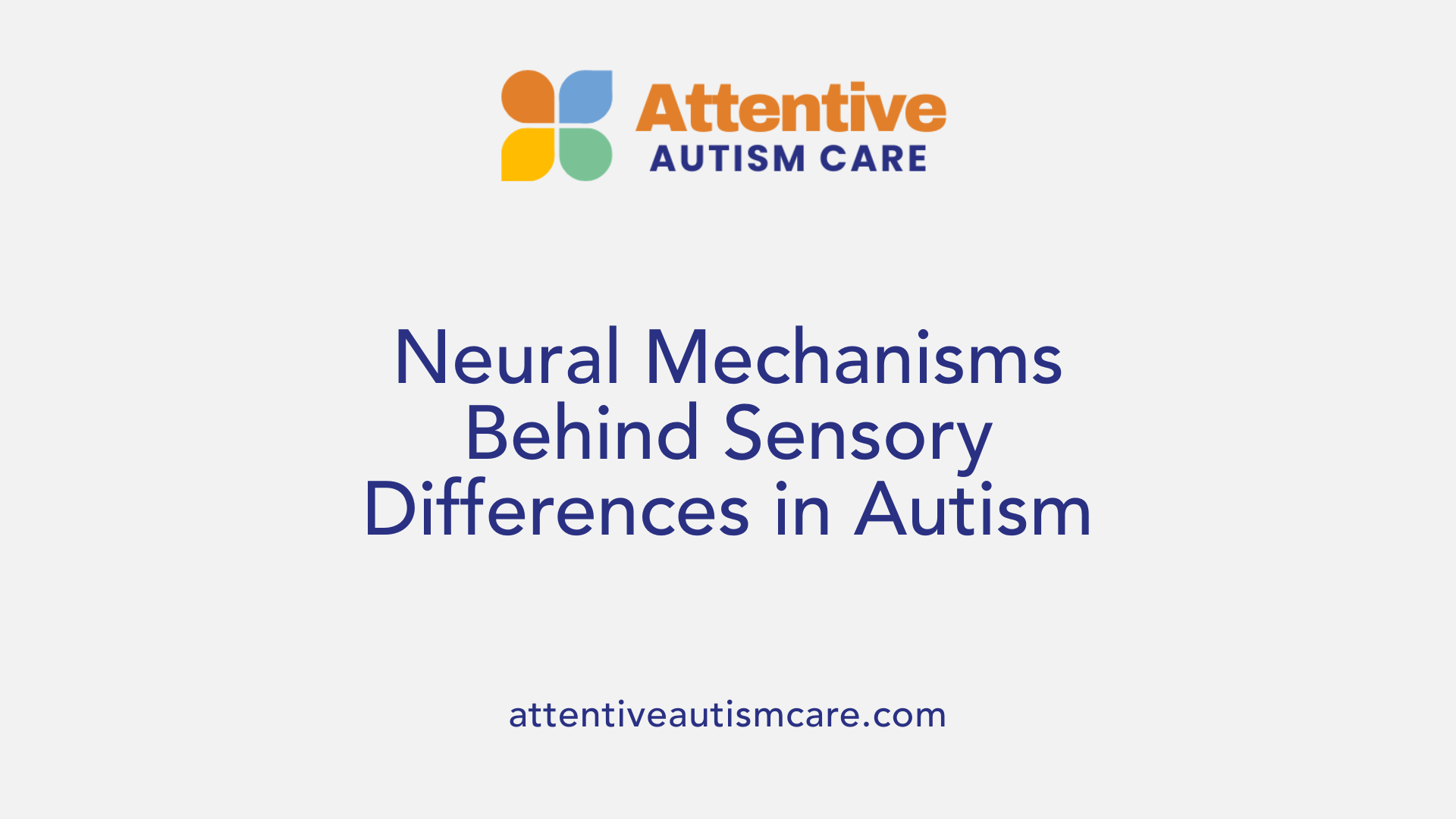
What neural mechanisms underlie sensory processing differences in autism?
Sensory processing differences in autism are rooted in complex neural mechanisms involving various brain networks and regions. Research shows that atypical connectivity and activity within primary sensory areas—such as auditory, tactile, and visual cortices—are significant contributors.
In individuals with autism, these sensory regions often exhibit altered response latencies and differences in how they represent sensory stimuli. For example, the processing of complex sounds or visual motion may be delayed or less precise, leading to difficulties in interpreting sensory input accurately.
Beyond these primary areas, disruptions in multisensory integration—how the brain combines information from different senses—are also common. This impairment can cause challenges in perceiving coherent sensory scenes and affect communication and social understanding.
Attention and emotional regulation systems further influence sensory experiences. Regions like the cerebellum and limbic system, including the amygdala, modulate responses to sensory stimuli. When these areas function atypically, individuals may experience heightened sensitivities or diminished responses, contributing to hypersensitivity or hyposensitivity.
The amygdala, in particular, plays a vital role in emotional reactions to sensory input. Overactivation may lead to anxiety or sensory overload, while underactivation could diminish awareness of stimuli. These neural differences collectively shape how sensory information is processed, leading to diverse sensory sensitivities seen in autism.
Understanding these neural mechanisms helps us see why sensory challenges vary among individuals and why tailored interventions are essential. Advances in neuroimaging reveal that atypical neural connectivity and regional activity are central to the sensory experiences of autistic people.
Impact of Sensory Avoidance on Daily Life and Mental Health
How does sensory avoidance impact daily functioning and well-being of autistic individuals?
Sensory avoidance behaviors can have a profound effect on the everyday life of autistic people. When individuals actively try to minimize exposure to sensory stimuli that cause discomfort—such as bright lights, loud sounds, or certain textures—they might avoid common environments like school, work, or social gatherings. This avoidance can limit their participation in social activities, hinder their ability to learn new skills, and interfere with routine daily tasks.
These behaviors often originate from sensory overload or hypersensitivity, making sensory experiences overwhelming or painful. As a result, individuals may withdraw from environments that are emotionally or physically distressing, leading to increased feelings of loneliness and frustration.
Emotionally, sensory avoidance can deepen anxiety and stress levels. The constant need to avoid overwhelming stimuli might cause heightened tension, which further impacts their mood and mental health. Physically, intense sensory discomfort can lead to physical symptoms like headaches, fatigue, or sensory shutdowns, where they become unresponsive or overwhelmed.
Supporting sensory needs with appropriate accommodations is fundamental. This can include creating calmer environments, allowing breaks, and using sensory tools like noise-canceling headphones or sensory toys. Targeted interventions such as sensory integration therapy aim to help individuals better process sensory information, reducing the need for avoidance.
In conclusion, recognizing and addressing sensory avoidance behaviors are crucial steps toward improving daily functioning and overall well-being. Such support fosters greater independence, reduces emotional distress, and enables autistic individuals to participate more fully in life.
Supporting Sensory Challenges: Strategies and Resources
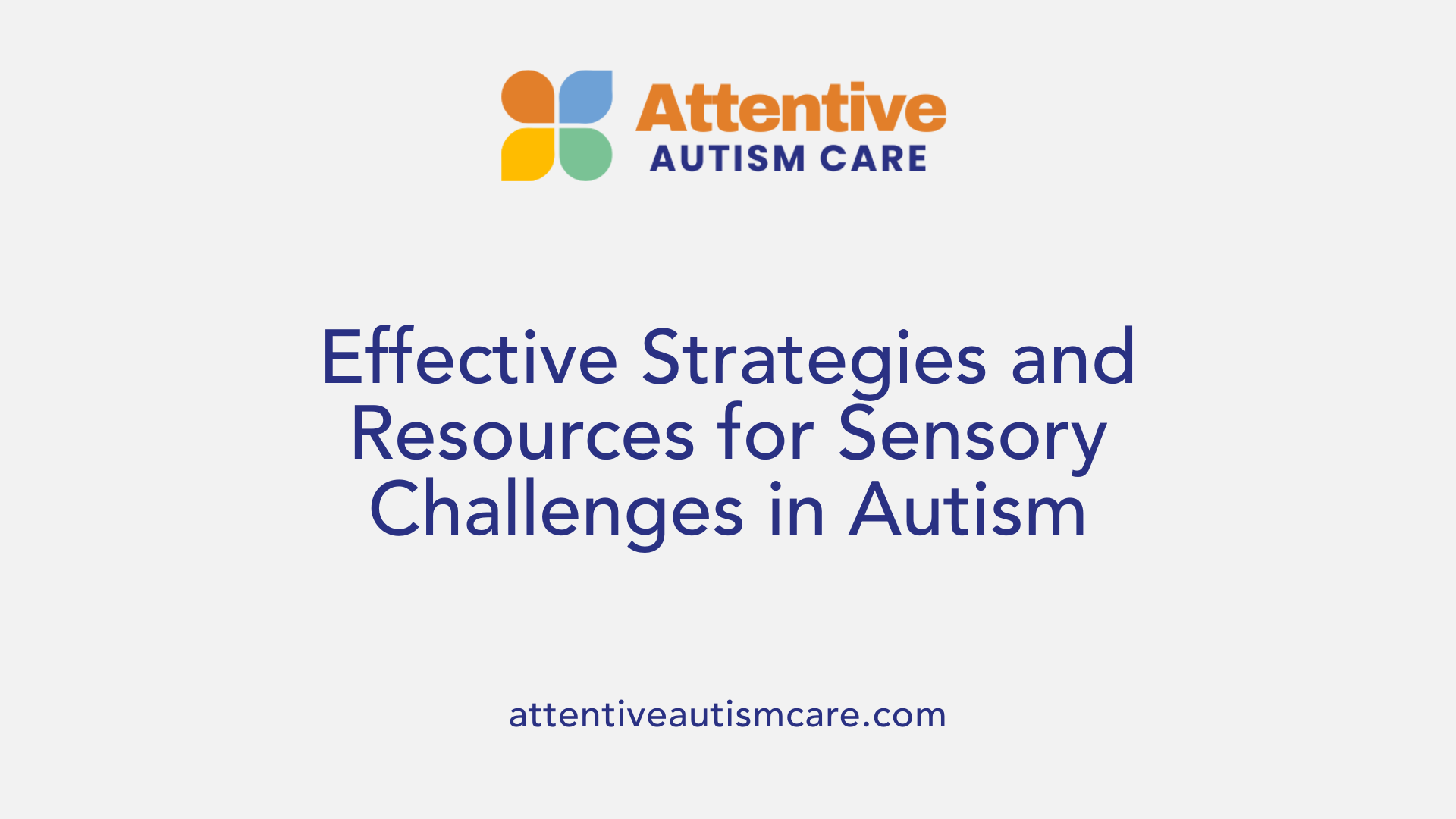
What strategies and accommodations can support individuals with sensory challenges?
Supporting children with autism who experience sensory processing difficulties involves tailoring approaches to each child's unique sensitivities and needs. For sensory seeking children, providing opportunities for movement and tactile exploration—such as jumping on a trampoline, using textured sensory toys, or engaging in rough play—can help satisfy their need for stimulation. Consulting occupational therapists can be invaluable in developing sensory diets filled with personalized activities that promote regulation.
Conversely, for sensory avoiding children who are hyper-responsive to stimuli like loud noises or bright lights, creating calming environments is essential. This includes reducing clutter, using noise-canceling headphones, adjusting lighting to softer or dimmer settings, and selecting comfortable clothing to minimize tactile discomfort. Creating calm spaces where children can retreat when overstimulated allows them to self-regulate.
Environmental modifications and sensory tools are critical components of support strategies. These might include using light covers, providing weighted blankets or vests, and offering fidget toys or oral sensory tools. Routine planning with visual schedules and advance warnings about changes help reduce anxiety and prevent sensory overload.
Therapeutic interventions such as occupational therapy and sensory integration therapy play a central role in helping individuals develop coping skills and process sensory input more effectively. These therapies often involve structured activities designed to gradually increase sensory tolerance and promote adaptive responses.
Empowering children and their families through education encourages self-awareness and self-advocacy. Teaching children to recognize their sensory triggers and communicate their needs ensures they can seek appropriate accommodations at school, home, or in social settings. Overall, a combination of environmental adjustments, tailored therapies, and fostering independence contributes significantly to improving quality of life for children facing sensory challenges.
Resources and Continued Education on Sensory Processing in Autism
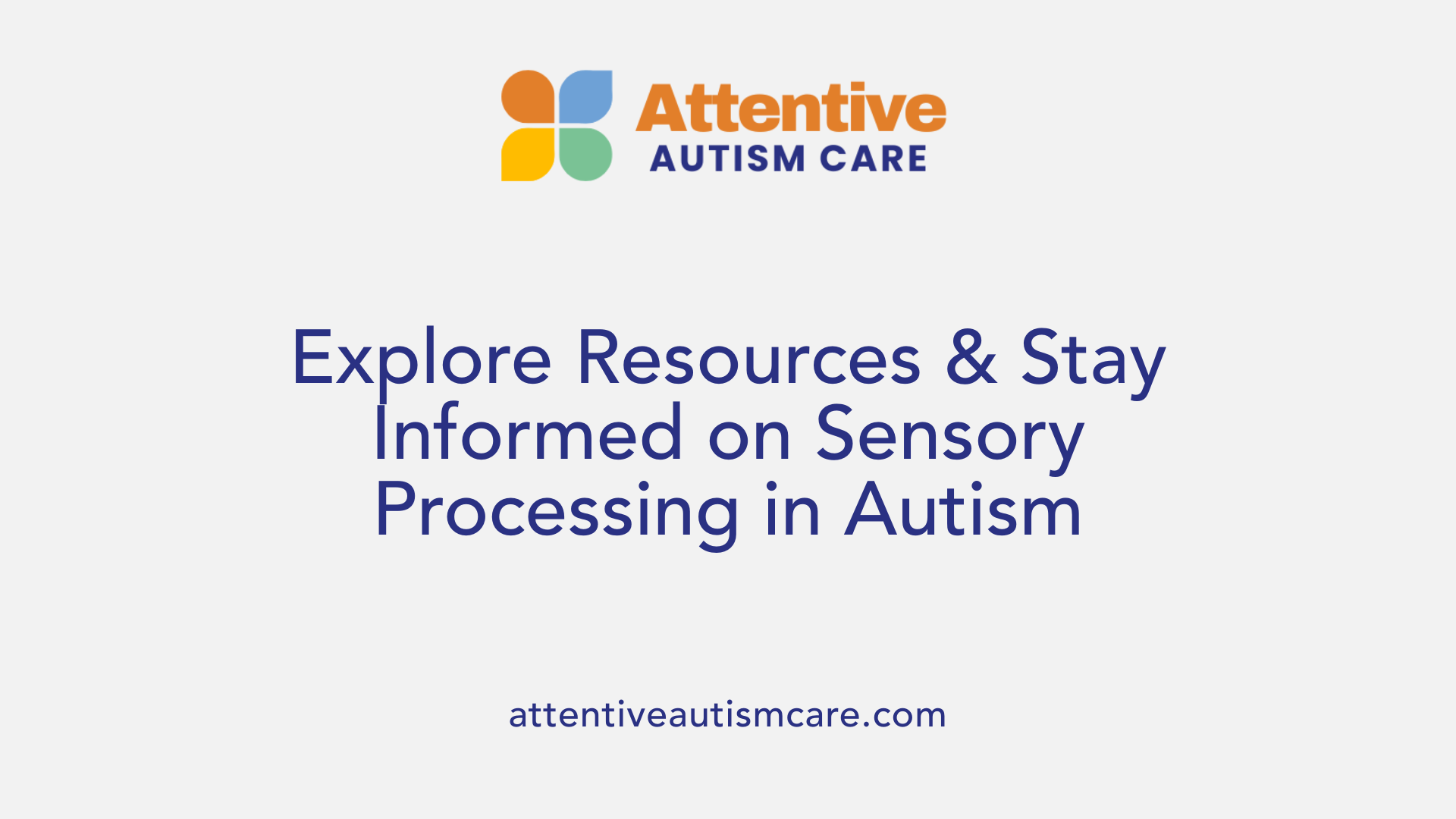
What are some research and educational resources available related to sensory processing in autism?
Understanding sensory processing differences in autism is crucial for effective support and intervention. There are numerous educational and research resources tailored to help families, educators, and professionals deepen their knowledge.
Websites like the Autism Society provide comprehensive guides on recognizing sensory sensitivities, managing behaviors, and strategies for daily life. These platforms often feature articles, tips, and links to local support groups.
Research journals publish in-depth studies on the neural mechanisms behind sensory sensitivities, exploring topics such as auditory processing, tactile hypersensitivity, and multisensory integration. This scientific foundation informs evidence-based practices.
The Autism Research Institute (ARI) plays a significant role in advancing knowledge by funding research on various aspects of sensory processing. Their focus includes auditory processing challenges, neural responses to stimuli, and potential biological markers that could aid in diagnosis and intervention.
Additionally, ARI offers a series of expert-led webinars discussing sensory differences across different stages of life, sensory-friendly environmental modifications, and recent research findings. These webinars serve as ongoing educational opportunities.
Occupational therapy organizations often provide training modules, workshops, and certification programs emphasizing sensory integration techniques and individualized sensory diet planning.
In summary, a wealth of resources—including articles, research studies, webinars, and organizational support—are available to improve understanding of sensory processing issues in autism and promote effective management strategies.
| Resource Type | Focus Area | Examples | Purpose |
|---|---|---|---|
| Websites | General info, support | Autism Society, Autism Speaks | Raise awareness and connect families |
| Research Journals | Neural mechanisms, interventions | Journal of Autism and Developmental Disorders | Share scientific findings |
| Organizations | Funding, training | ARI, Occupational Therapy Associations | Support research and professional growth |
| Webinars | Current research, strategies | ARI, local therapy groups | Ongoing education |
| Support Groups | Community support | Local autism groups, online forums | Peer advice, shared experiences |
Fostering Awareness and Support for Sensory Needs in Autism
Understanding the complexities of sensory processing differences and sensory avoidance behaviors in autism is crucial for promoting acceptance, effective intervention, and supportive environments. Through ongoing research, tailored strategies, and community awareness, we can better empower autistic individuals to navigate their worlds with confidence and well-being.
References
- Sensory Seeking vs Avoiding
- Sensory issues
- Understanding Sensory Avoidance in Autism
- Sensory Processing in Autism: A Review ...
- Autism and sensory processing
- Understanding Sensory Processing in Autism and the ...
- Understanding sensory processing challenges in your child
- Sensory Processing Resources
- Sensory Processing Differences in Individuals With Autism ...


